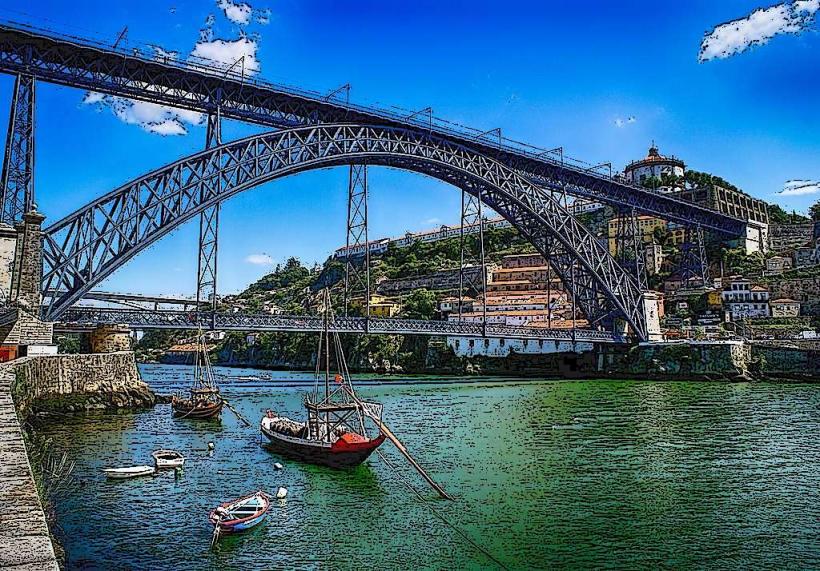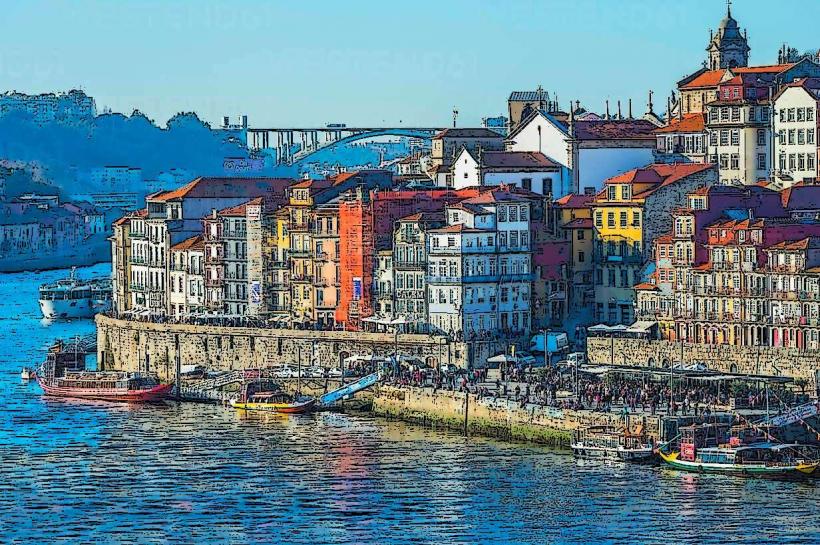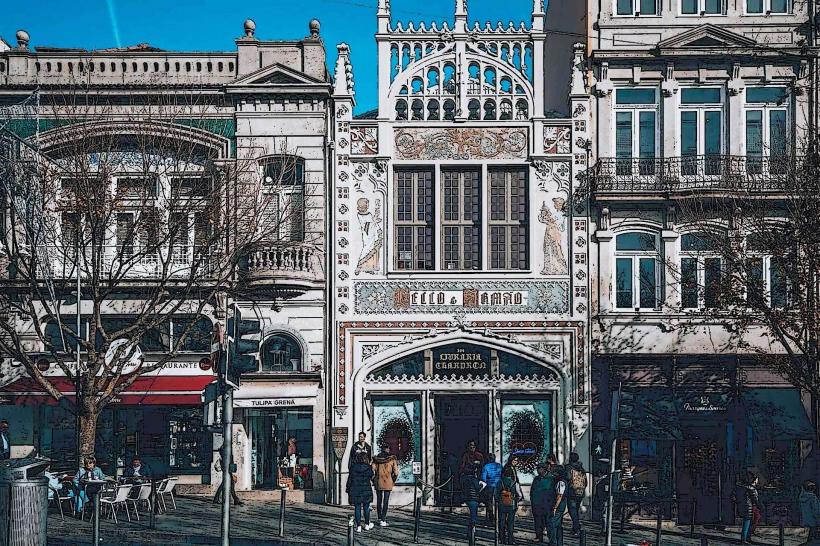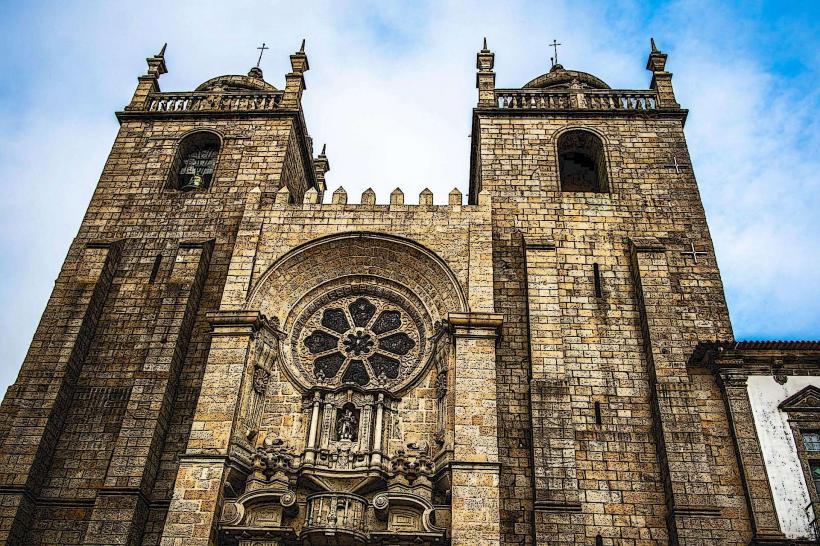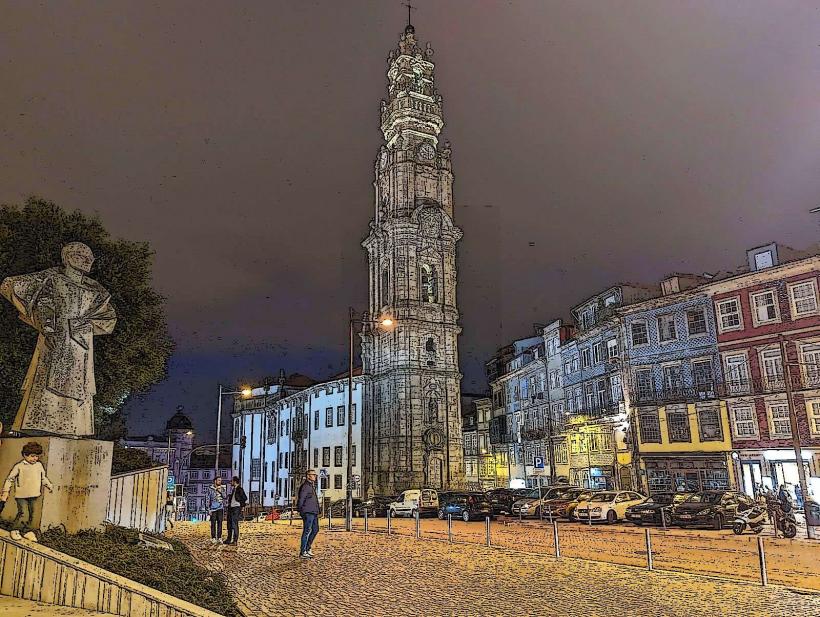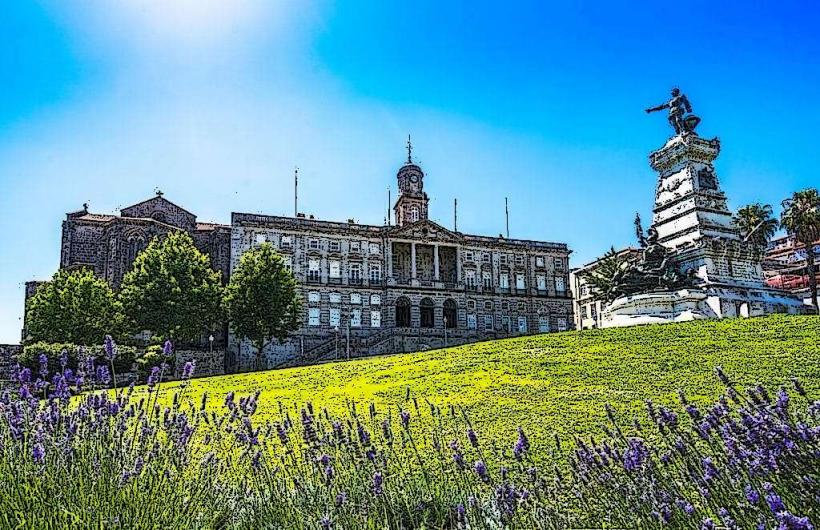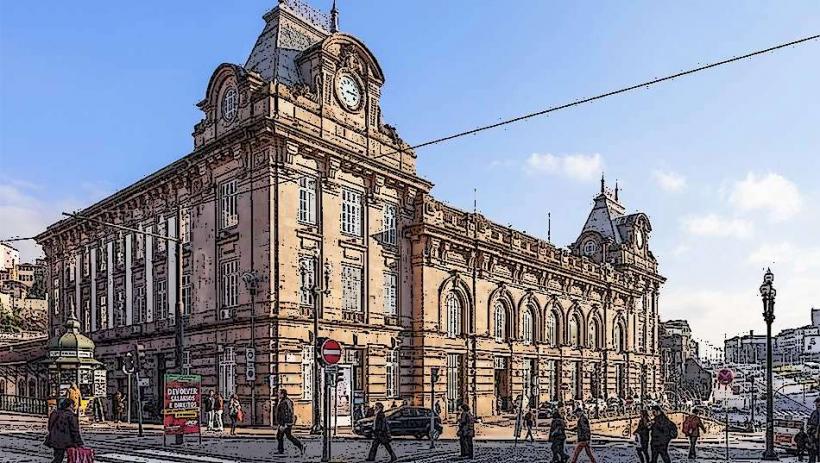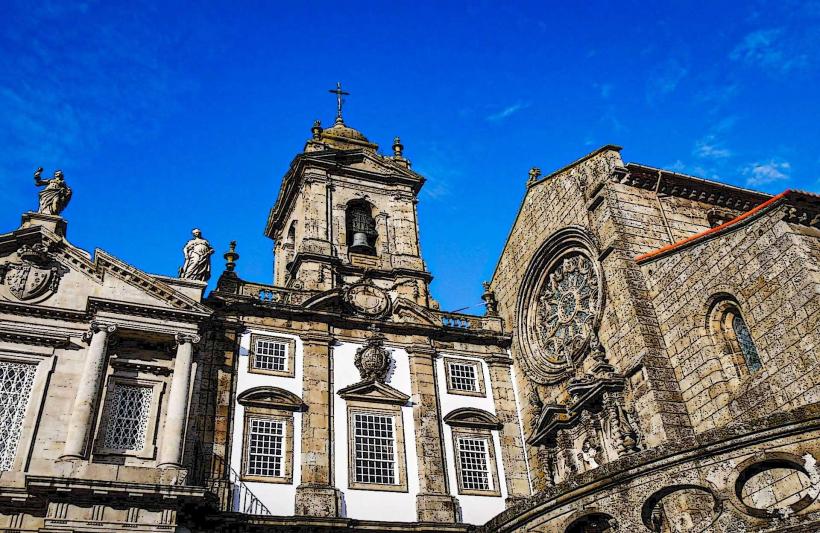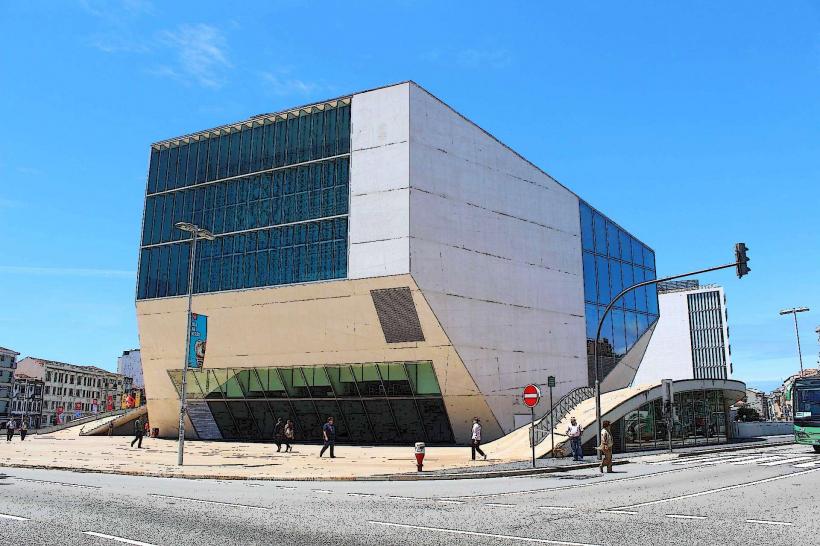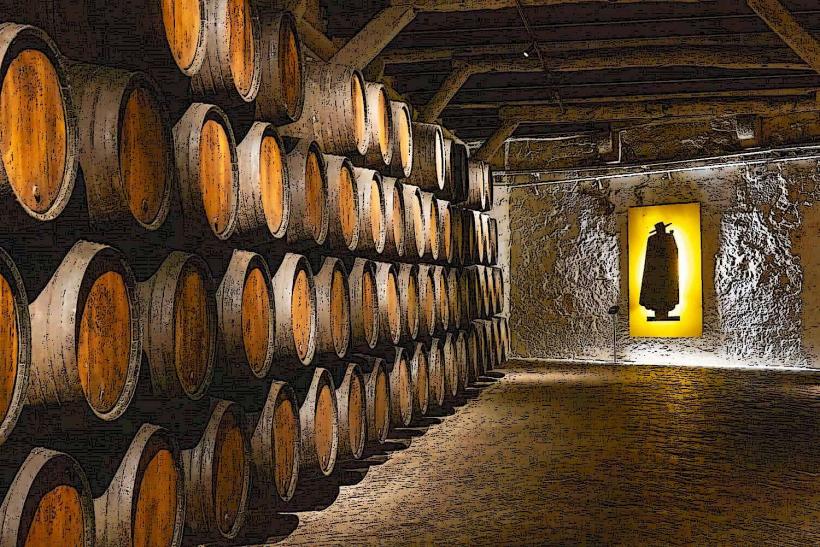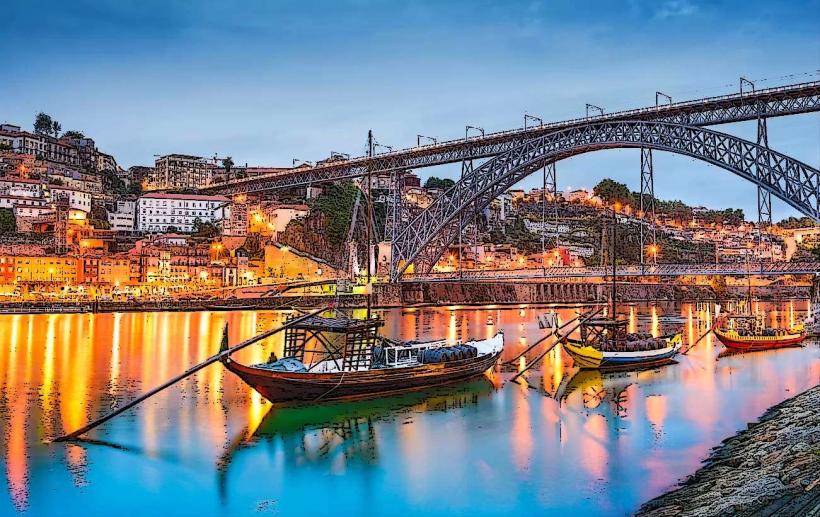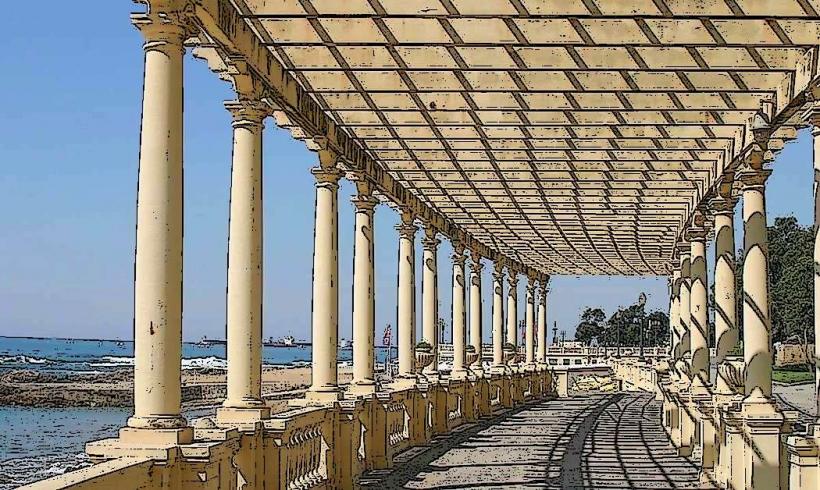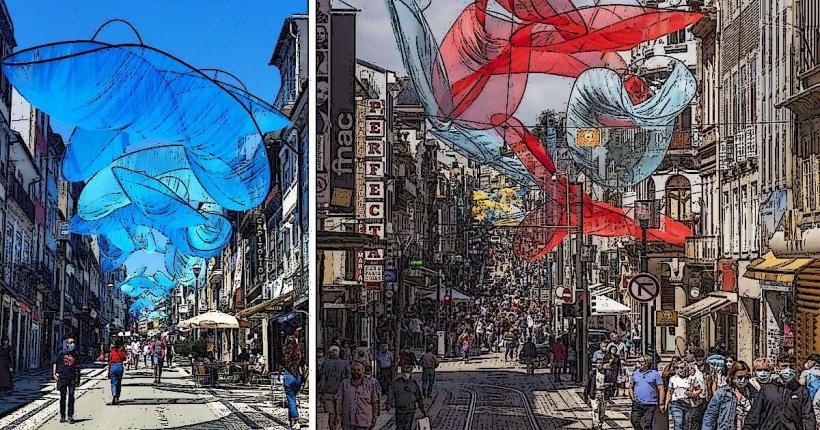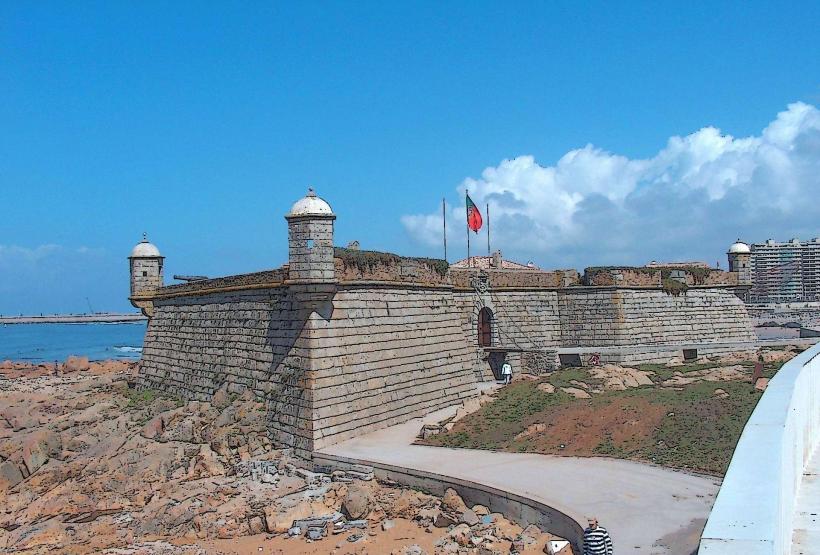Information
Landmark: Church of Saint IldefonsoCity: Porto
Country: Portugal
Continent: Europe
The Church of Saint Ildefonso (Igreja de São Ildefonso) is a Baroque-style church located in Porto, Portugal, specifically on the Praça da Batalha square. It is a significant architectural landmark in the city, known for its striking appearance, historical importance, and decorative elements, especially its beautiful azulejos (traditional Portuguese ceramic tiles).
1. History and Background
- Construction and Foundation: The church was built between 1709 and 1739 by the Brotherhood of Saint Ildefonso, which was a religious order. The design of the church is attributed to the architect Niccolò Nazzoni, although its construction and subsequent renovations over the years involved many hands. It was initially dedicated to Saint Ildefonso of Toledo, a Spanish bishop and scholar.
- Baroque Influence: The church is a prime example of Baroque architecture, which was popular in Portugal during the late 17th and early 18th centuries. Baroque style is known for its dramatic use of space, ornate detailing, and grandeur, which is evident in the church’s interior and exterior design.
- Renovations: Over the centuries, the church has undergone several renovations and modifications, including the addition of the azulejos on its façade in the early 20th century, which were completed in 1932 by the artist Joaquim Pinto Lima.
2. Architectural Features
- Baroque Façade: The church’s façade is a stunning example of Baroque design, with an imposing structure that features a combination of curved lines, columns, and volutes. The grand entrance is framed by a set of ornate doors, and above it, you’ll find the image of Saint Ildefonso, who is depicted as the patron saint of the church.
- Two Bell Towers: The church has two prominent bell towers, which stand on either side of the building, giving the church its symmetrical appearance. These towers are topped with domed roofs, adding to the church's commanding presence on the square.
- Azulejos (Tiles): One of the most striking features of the Church of Saint Ildefonso is its colorful azulejos on the façade. The tiles cover much of the church’s exterior and depict scenes from the life of Saint Ildefonso, as well as religious motifs. These tiles were added in the early 20th century and are a perfect example of the artistic heritage of Portugal. The azulejos create a visual connection between the church and the city's artistic traditions, making it one of Porto's most iconic tiled façades.
- Interior: The interior of the church is equally impressive, with golden woodwork, altars, and paintings typical of Baroque interiors. The main altar is dedicated to Saint Ildefonso, and the walls are adorned with religious imagery. The ceiling features frescoes, adding to the opulence of the space.
3. Religious and Cultural Importance
- Saint Ildefonso: Saint Ildefonso of Toledo, the church’s patron saint, was a 7th-century Spanish bishop known for his piety, theological writings, and advocacy for the Immaculate Conception of the Virgin Mary. His association with the church highlights the religious significance of the building, not only as a place of worship but also as a symbol of Catholic devotion in Porto.
- Religious Services: The Church of Saint Ildefonso is an active place of worship. It hosts regular masses, weddings, and special religious ceremonies, which continue to attract both local parishioners and visitors interested in its historical and architectural beauty.
- Cultural Venue: In addition to its religious function, the church also plays a role in Porto's cultural scene. Its architectural beauty, combined with the artistic significance of the azulejos, makes it a popular site for art and history enthusiasts.
4. Location and Surroundings
- Praça da Batalha: The church is located in the Praça da Batalha, a busy square in central Porto. This area is historically significant, and the square is home to several other important buildings, including the Palácio da Bolsa and the Igreja de São José das Taipas. The church’s position on the square gives it a prominent place in Porto’s urban landscape.
- Accessibility: The Church of Saint Ildefonso is located near other major attractions in Porto, such as Rua de Santa Catarina, which is known for its shopping and cafes. Its central location makes it easy to visit while exploring the city.
5. Visiting the Church
- Opening Hours: The Church of Saint Ildefonso is typically open to the public during the day. Visitors can explore the exterior and, depending on the schedule, may also be able to enter the church to admire its Baroque interior and tiles.
- Photography: The church, with its detailed tiles and impressive façade, is a popular spot for photography, especially for those interested in capturing the iconic views of Porto's historic buildings.
- Nearby Attractions: The church is situated near other key Porto landmarks, making it easy to visit as part of a walking tour of the city’s historic center. Nearby attractions include the São Bento Railway Station, Café Majestic, and Ribeira District.
6. Conclusion
The Church of Saint Ildefonso is a captivating blend of religious significance, Baroque architecture, and Portuguese cultural heritage. Its impressive façade, adorned with azulejos, stands as one of Porto's most iconic landmarks. Whether you're visiting for its spiritual history, its stunning tilework, or its architectural beauty, the church offers a memorable experience that highlights the rich history and artistic tradition of Porto.

